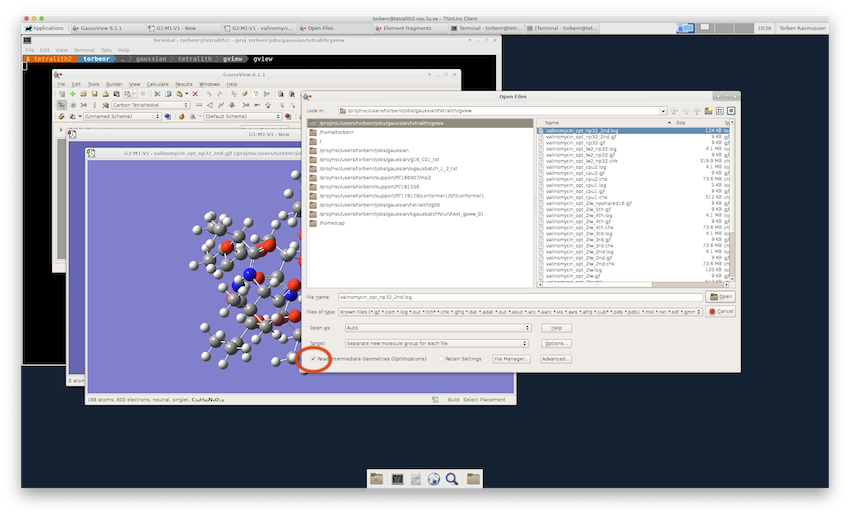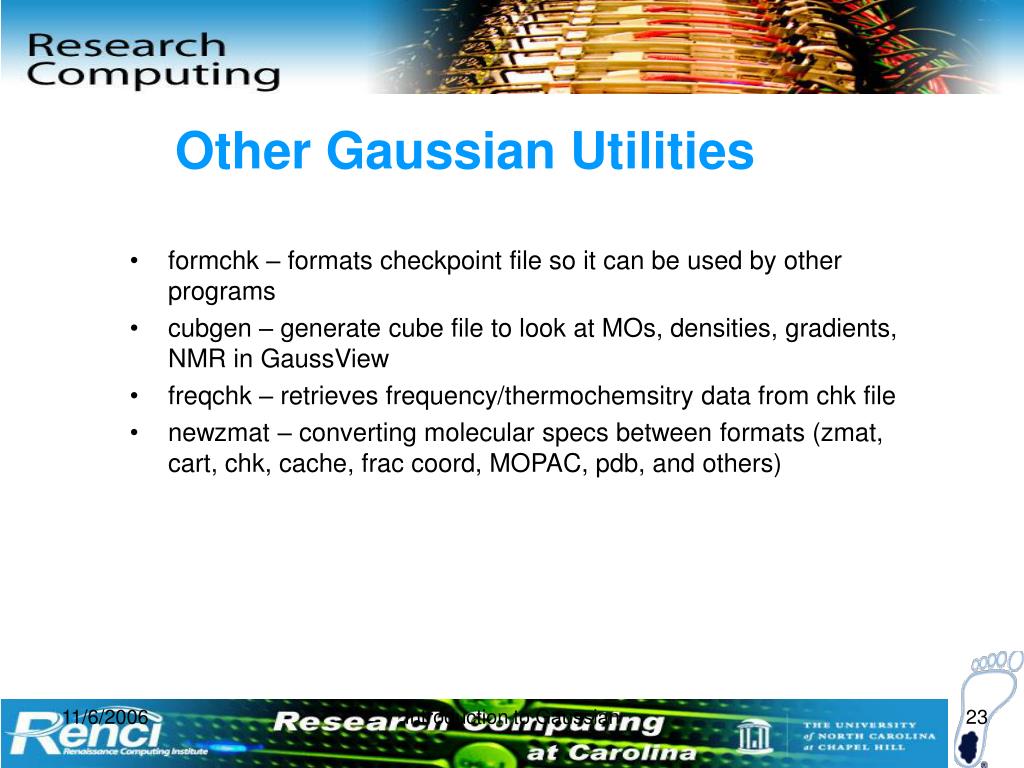Chemistry::ESPT::Gfchk - Gaussian formatted checkpoint file object.
You are reading in a molecular-orbital guess from the checkpoint file, but the projection from the old to the new basis set has failed. This can happen if certain pseudopotential basis sets (CEP-121G.) are used with polarization functions where no polarization functions actually exist. Gaussian09 did not crash during the simulation that produced the checkpoint file the geometry optimization converged (if this is applicable) you use the same Gaussian09 binaries that have been used for checkpoint file creation, as the normal checkpoint file format is. In link L101 the program reads in or retrieves from the checkpoint file the structure of the system together with other parameters and prints the structure (in a slightly modified format) together with overall charge and spin multiplicity and the comments supplied in the input file. Read a line from the input file containing the name of a checkpoint file. This option also accepts several keywords: generate says to generate a guess as usual, and read and chk are equivalent to Guess=Read (using the checkpoint file specified to%Chk as usual). Enclose the path to the checkpoint file in quotes if it contains internal spaces.
This module provides methods to quickly access data contained in a Gaussian formatted checkpoint file. Guassian formatted checkpoint files can only be read currently.
All attributes are currently read-only and get populated by reading the assigned ESS file. Attribute values are accessible through the $Gfchk->get() method.
NBASIS x NBASIS coefficient matrix. The coefficients correspond to Alpha or Beta depending upon what spin was passesd to $Gfchk->analyze().
NATOMS x 3 matrix containing the current Cartesian coordinates


Electronic energy for the theroy level employed.
SCF energy. This will be either the Hartree-Fock or the DFT energy. See Gaussian documentation for more information.
Array with length NBASIS, containing the eigenvalues. The eigenvalues correspond to Alpha or Beta depending upon what spin was passesd to $Gfchk->analyze().
String containing the DFT functional utlized in this job.
Array containing the Cartesian gradients.
Lower-triangular matrix containing the Cartesian Hessian.
Number corresponding to the highest occupied molecular orbital. The value corresponds to either Alpha or Beta electrons depending upon what spin was passesd to $Gfchk->analyze().
A rank three tensor containing Cartesian coordinates for each IRC geometry.
Array, with length IRCPOINTS, containing the electronic energy at each IRC geometry.
Cartesian gradients for each IRC geometry stored as a rank two tensor.
Total number of IRC steps.
Array of reaction coordinate values for each IRC step.
Array containing Gaussian keywords used in this job.
Array with length NATOMS, containing the atomic masses.
Total number of redundant internal coordinates.

Number of redundant internal angles.
Read Checkpoint File Gaussian File
Number of redundant internal bonds.
NREDINT x 4 matrix containing the redundant internal coordinates. Each coordinate is defined by four integers corresponding to the atom numbers. Bond coordinates have zeros in columns 3 & 4. Bond angle coordinates have a zero in column 4.
Number of redundant internal dihedrals.
Array containing the redundant internal gradient.
Lower-triangular matrix containing the redundant internal Hessian.
Gaussian route line


<S**2> expectation value.
Method parameters denoted in [] are optional.
Creates a new Gfchk object
Read Checkpoint File Gaussian Tool
Analyze the spin results in file called filename. Spin defaults to Alpha.
0.03
Gaussian Read Checkpoint File
Chemistry::ESPT::ESSfile, Chemistry::ESPT::Glib, http://www.gaussian.com
Dr. Jason L. Sonnenberg, <sonnenberg.11@osu.edu>
Copyright 2008 by Dr. Jason L. Sonnenberg
This library is free software; you can redistribute it and/or modify it under the same terms as Perl itself. I would like to hear of any suggestions for improvement.
To install Chemistry::ESPT::Gfchk, copy and paste the appropriate command in to your terminal.
For more information on module installation, please visit the detailed CPAN module installation guide.